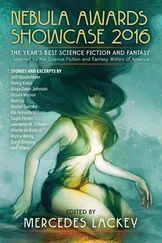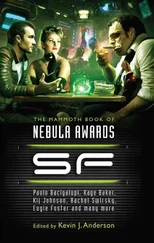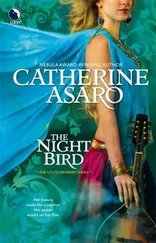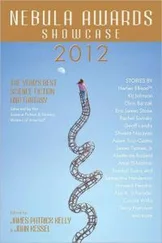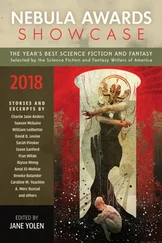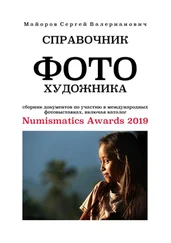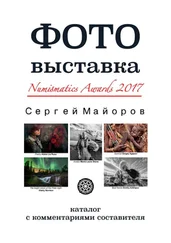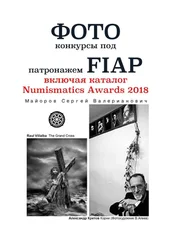“And I know she’ll let me tell her how the peaches lost their way
how they fell out of a wagon on a sweaty summer’s day,
how the buzz got all around that there was sugar to be had,
and the bees came singing, and the bees came glad.”
C. S. E. Cooney, the 2011 Rhysling Award winner in the long form category, also treats the reader to gratifyingly evocative language in “The Sea King’s Second Bride.” Her lyrical word pictures evoke a fantastic land in the deep sea. At turns graceful and irreverent, the poem is a sequel to the traditional Scandinavian ballad “Agnete and the Merman.” Cooney offers the ill-behaved merman a second chance for happiness, though at first he refuses to notice. The clever contrasts between the conventions of traditional folktales and the sensibility of a modern woman make for a delicious mix in this poem.
Pouring forth its seas everywhere, then, the ocean envelops the earth and fills its deeper chasms.
—Nicolaus Copernicus,
On the Revolutions of the Heavenly Spheres
Brad R. Torgersen offers a science fiction take on the deep sea in his story “Ray of Light.” Although the world he evokes with such careful detail is here on Earth, it is as alien to most of us as another planet. “Ray of Light” centers on the confinement of Earth’s last humans in undersea settlements after the surface has become unlivable. Torgersen uses the milieu to frame a teenager’s alienation, not only her rebellion against her father, but also against her environment. The setting exerts a literary pressure on the characters analogous to the pressure of the deep sea that dominates their lives. It didn’t surprise me that the means by which the young people came together in secret to plan was through a music club. Although music played a relatively small part compared to the arts in other stories in this anthology, I found it a satisfying accent for the tale of a father’s struggles to accept his child’s transition into adulthood.
Sauerkraut is tolerant, for it seems to be a well of contradictions. Not that it would preach a gastronomic neutrality that would endure all heresies. It rejects dogmatism and approves of individual tastes.
—Julien Freund, director of the Institute of Sociology in Strasbourg,
Les Saisons d’Alsace
Ferrett Steinmetz sweeps us off to another sort of world in his novelette “Sauerkraut Station.” The story is set on a space habitat that offers medical aid and refits ships with supplies. Those supplies include their specialty, sauerkraut, which most of their visitors hold in far too low esteem, at least in the view of Lizzie, the narrator. The setting is brought alive by the author’s careful detail and serves as a foil for the political background of the universe Steinmetz builds. The tale is both stark and reaffirming, the story of a remarkable young woman.
When I first read “Sauerkraut Station,” I assumed it had appeared in Analog . It has that feel for me in part because of the well described life in a space station, including what happens if we lose amenities we take for granted, such as light and gravity. I was intrigued to learn that it came from the online zine GigaNotoSaurus . In fact, two works in this book first appeared in GigaNotoSaurus , the other being “The Migratory Patterns of Dancers.” They offer telling examples of the sea changes in publishing we’ve experienced over the last decade. In the past, when the outlets for short fiction were limited to hardcopy markets, the expense of producing and distributing such publications drastically constrained the number of markets, which meant many good stories went unpublished or appeared in hard-to-find places. Now, with the advent of so many online markets, more top-notch stories than ever are seeing print. This is the first I’ve seen of GigaNotoSaurus , but I will definitely be looking up more of their issues.
You can’t remake the world
Without remaking yourself.
—Ben Okri,
Mental Fight
Geoff Ryman’s carefully rendered novelette “What We Found” takes place in Nigeria. On one level, it centers on the attempts of Terhemba, a Nigerian scientist, to reconcile his research with the ravages suffered by his family; the two converge when he discovers evidence that parents can pass the effects of traumas they have endured to their children. The narrator writes, “What we found is that 1966 can reach into your head and into your balls and stain your children red. You pass war on… . We live our grandfathers’ lives.” In telling Terhemba’s story, Ryman writes vividly of a Nigeria that is in turns severe and beautiful.
On another level, “What We Found” draws on a phenomenon observed by psychologists, in particular John Schooler, that their research showed a “decline effect,” where attempts to duplicate a well-documented result become less and less successful over time even if many scientists initially replicate the work. The decline may derive from psychological effects, that the experimenters expect the result and so are subconsciously predisposed toward work that verifies their expectation. The decline is then the reassertion of the scientific method over time. However, even that theory doesn’t seem to fully account for the effect. In “What We Found,” Ryman extrapolates the idea to a fascinatingly eerie extreme. What if all scientific results disappeared over time?
To motivate the idea, Ryman draws on quantum theory, specifically the result that the act of observing a system changes that system, collapsing it from a mixture of possible states to the one observed. As a physicist, I’ve calculated linear superpositions of quantum states to describe the behavior of atoms and molecules. Mathematically, it simply means that more than one state exists for the particles in a collection, and we don’t know which applies to a particular particle until we look at it. In popular culture, it has become famous as the “Schrödinger’s cat” paradox, which essentially says, “The cat in the box is neither dead nor alive, but is a mixture of those states—until we look.”
Ryman takes the idea a wonderfully fanciful step further. Suppose the act of observation changed everything scientists observed, including on a macroscopic level, so that the more they attempted to replicate previous results, the less they succeeded? All our scientific laws, including those we’ve known for centuries, even millennia, would eventually cease to be true. Ryman uses the idea to frame one man’s attempt to understand himself, his family, and his future.
The golden age of science fiction is twelve.
—Peter Graham,
Void
The two novels excerpted in this anthology both have vivid resonances for me. As with many science fiction readers, I related to the protagonist in the book Among Others . Like her, I was an outcast during my elementary school years, and I too found a refuge in science fiction, practically inhaling every book I could lay hands on. But my world had another aspect: ballet. I began training as a small child and never stopped regardless of the obstacles, including a body shape better suited to jazz than classical dance. When I hit puberty, the unexpected happened. Those many years of dance classes after school and on weekends, those mornings I got up early and went running in the park to let my feet pound away my frustrations—they paid off in a manner I had no idea would happen. Until then, I had known only that when I danced, I could let free a part of myself that had no other outlet. I never realized all that training was also turning me from the proverbial ugly duckling into if not a swan, then at least a graceful duck.
By the time I hit middle school, I was deep within the cognitive dissonance of going from the least popular kid in school to being liked and accepted as a dancer, knowing all the time that inside, I was the same person my peers had bullied only two years before. To me, nothing had changed except my exterior. It was a sobering wake-up call to the effects of bias and stereotype. For many, twelve is the “golden age” of science fiction, that age when they find the genre and community that speaks to them. For me, twelve was the end of my (first) science fiction age. Struggling with the confusion of a puberty that hit me like an express train slamming into a brick wall, I could no longer ignore the sexism in the science fiction stories I had devoured for so many years, nor the fact that those stories were targeted at my male peers. The books were about their dreams, their confusion, and their adventures, and I didn’t fit in anywhere.
Читать дальше


